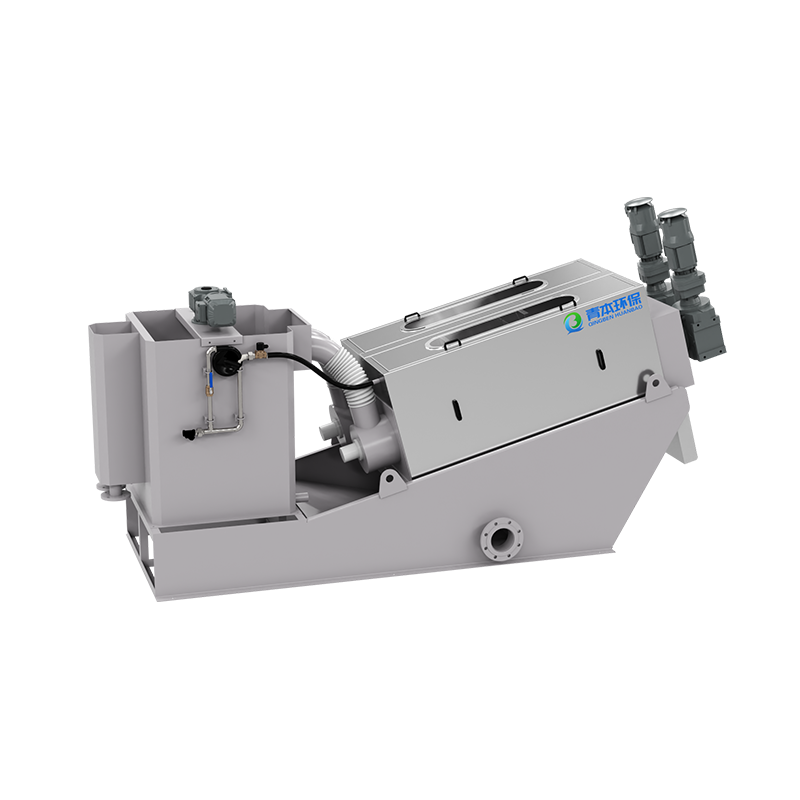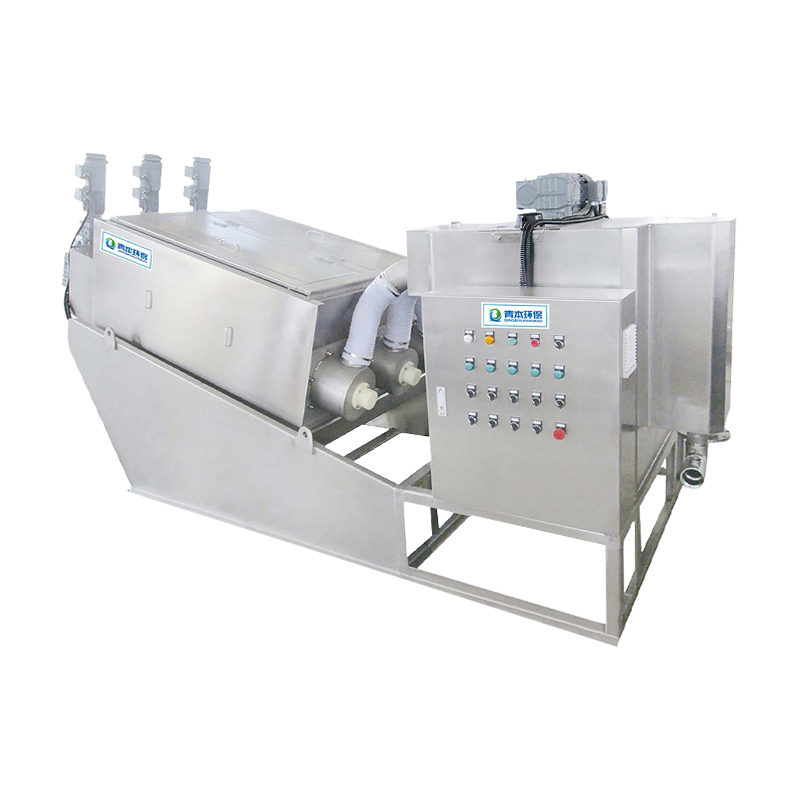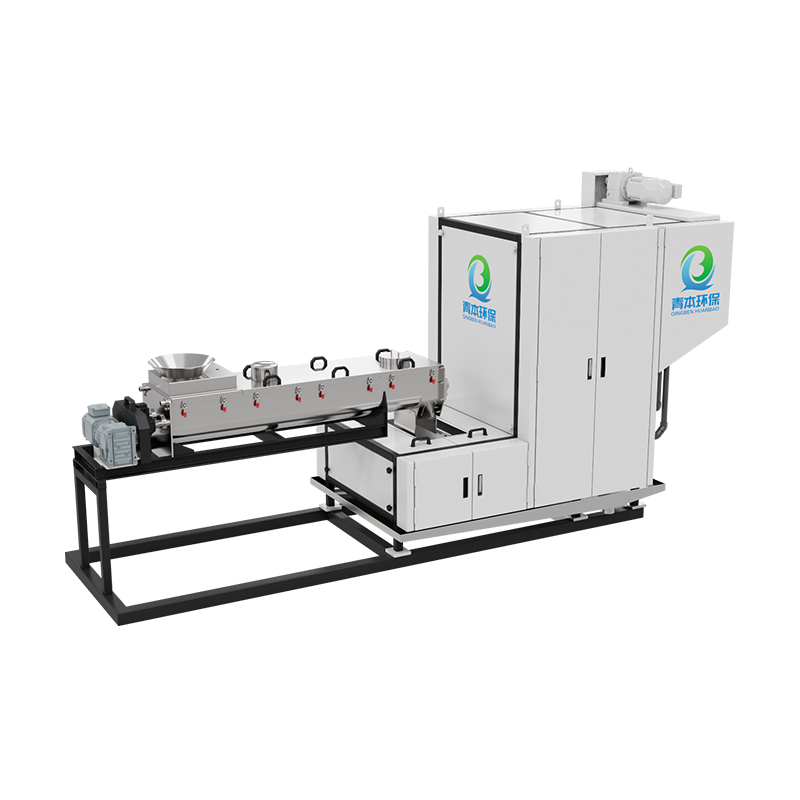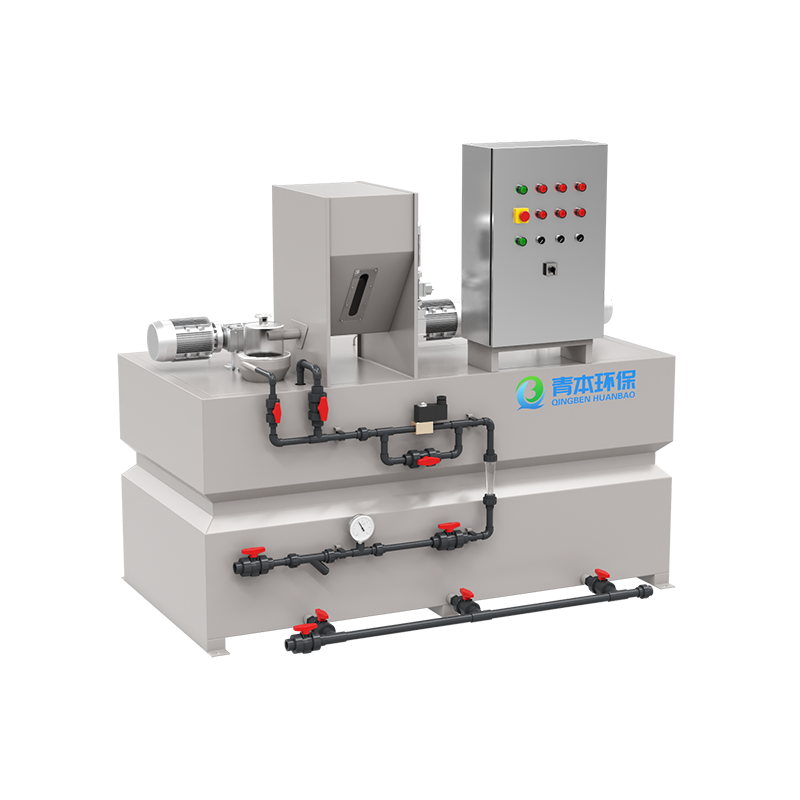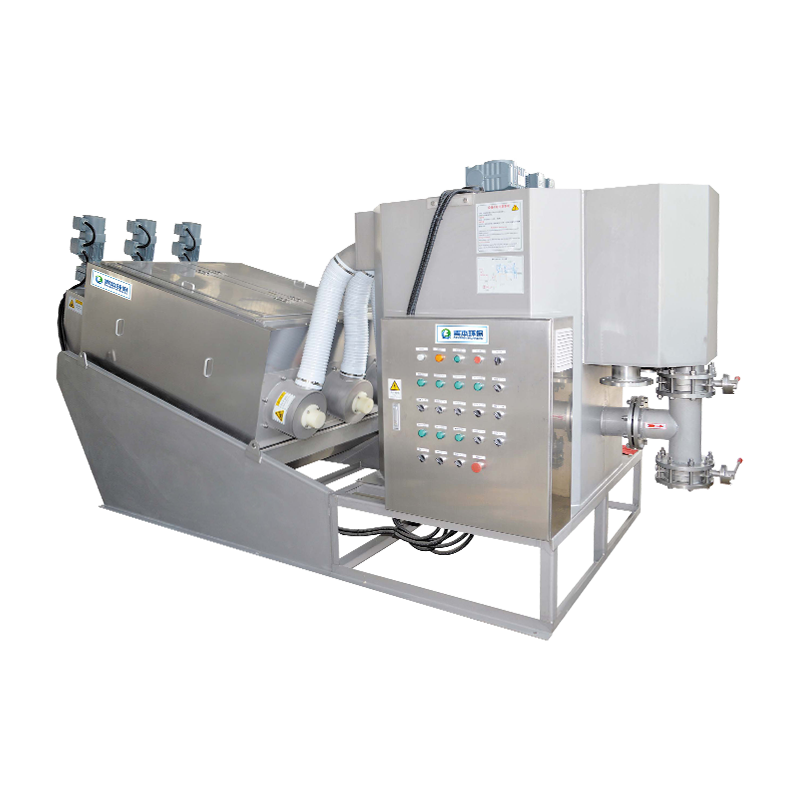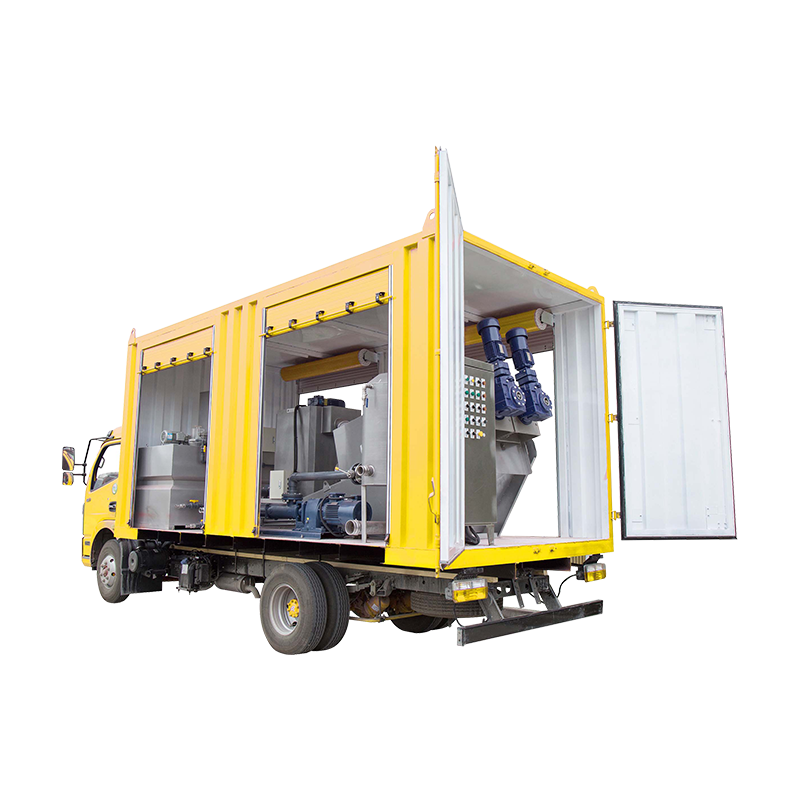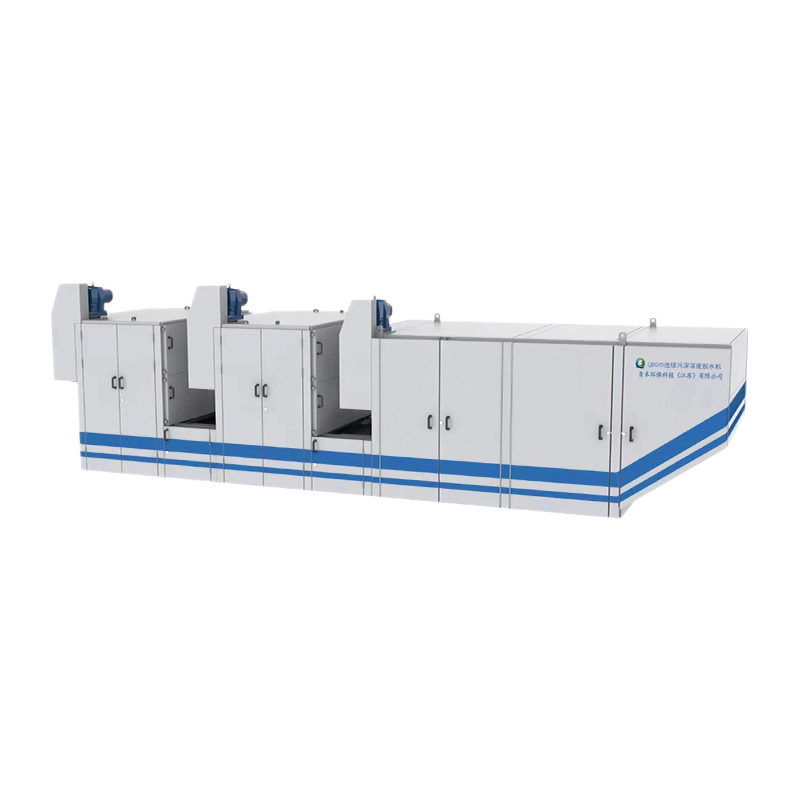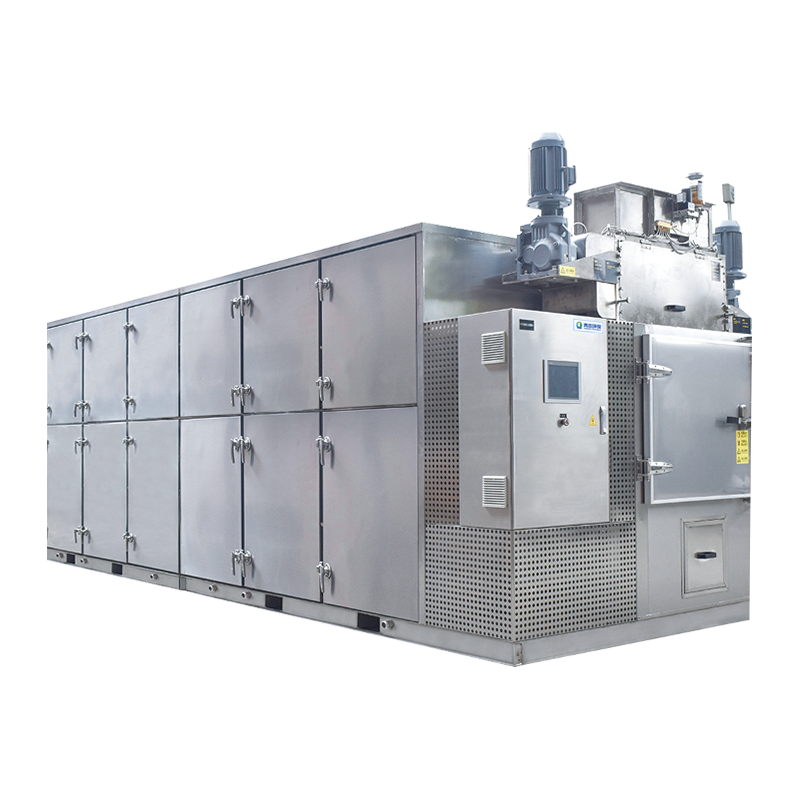A screw press sludge dewatering machine is a continuous sludge dewatering machine that combines screw pressure with the principle of dynamic and static ring filtration slots. It is primarily used for sludge reduction in sewage treatment plants and industrial wastewater treatment facilities. The screw press sludge dewatering machine integrates an automatic control cabinet, a flocculation and conditioning tank, a sludge concentration and dewatering unit, and a liquid collection tank. It achieves efficient flocculation and continuously completes sludge concentration, pressing, and dewatering, ultimately returning or discharging the collected filtrate.
1. Core Structure
The dynamic and static ring stack consists of alternating fixed rings (static rings) and movable rings (dynamic rings). Adjustable filtration slots of 0.5-2mm are formed between the rings, allowing water molecules to pass through while retaining solid particles.
The spiral shaft has a variable diameter design (gradually increasing diameter) and variable pitch (gradually decreasing pitch). This increases the compressive strength of the sludge through a volumetric compression ratio (typically 4:1 to 5:1). Drive System
Equipped with a variable frequency motor (typically 2.2-7.5kW), the speed is adjustable from 2-10 rpm to accommodate varying sludge concentrations.
2. Working Principle
Three-Stage Dewatering Process
Concentration Stage: Upon entering the sludge, it is initially drained via a spiral conveyor, increasing the solids content from 0.5%-1% to 3%-5%.
Dewatering Stage: Sludge is squeezed in the gap between the moving and stationary rings, achieving a solids content of 10%-15%.
Compression Stage: Further compression is achieved through the back pressure plate at the tapered end, achieving a final solids content of 18%-25%.
Self-Cleaning Mechanism
The continuous micro-oscillation of the moving ring (amplitude approximately 0.5mm) automatically cleans the filter slits and prevents clogging (reducing flushing water usage by 60% compared to traditional belt dewatering machines).
3. Maintenance points of spiral sludge dewatering machine
(1) Daily maintenance (every shift/day)
Filter slot patency check
After stopping the machine, manually rotate the spiral shaft to observe whether there is sludge compaction between the dynamic and static ring stacks (pay special attention to the end of the pressing section).
Use a high-pressure flushing gun (pressure ≥3MPa) to reversely flush the filter slot to ensure that the drainage hole is not blocked.
Lubrication status monitoring
Check the grease film status of the main shaft bearing and drive chain (lithium-based grease is recommended). The grease replenishment cycle is ≤200 hours.
Note: Excessive grease addition will cause sludge adhesion. It is recommended to use an automatic grease injection system.
Electrical system inspection
Test the operation of the inverter cooling fan and record the motor current fluctuation (the normal value should be 80%-95% of the rated current).
(2) Periodic maintenance
1). Weekly maintenance
Flushing system verification: Test the atomization effect of the spray nozzle (the coverage should reach 90% of the ring diameter) and clean the calcified scale. Bolt Tightening: Use a torque wrench to re-tighten the bolts securing the dynamic and static rings (see the equipment manual for standard values, typically 50-70 N·m).
2) Monthly Maintenance
Dynamic Ring Swing Test: Remove the observation window and measure the dynamic ring swing amplitude (normal value: 0.3-0.8 mm). If swing is insufficient, adjust the limit block.
Screw Shaft Wear Inspection: Use a caliper to measure the thickness of the spiral blades. If wear exceeds 20% of the original thickness, repair with welding or replace.
3) Annual Overhaul
Complete Disassembly and Cleaning: Remove the screw shaft and dynamic and static ring assembly in sequence. Soak in 5% oxalic acid solution to remove inorganic salt scale.
Critical Component Replacement: Replace the main shaft mechanical seal (usually 8,000 hours life) and polypropylene ring (replace if wear clearance exceeds 2 mm).
4) Seasonal Maintenance
Winter: Add a bearing heater (maintain a temperature >5°C) to prevent grease solidification.
Rainy Season: Check the control cabinet's moisture-proof silicone for discoloration (replace if pink turns white).
4. Common Fault Warning Signals
Abnormal vibration (amplitude > 0.15mm): This may indicate spindle bending or bearing damage.
Sudden increase in mud moisture content: This is usually caused by filter slot blockage or back pressure plate wear.
Drive motor overheating: Check for friction between the screw shaft and the ring (the clearance should be maintained at 1-2mm).






